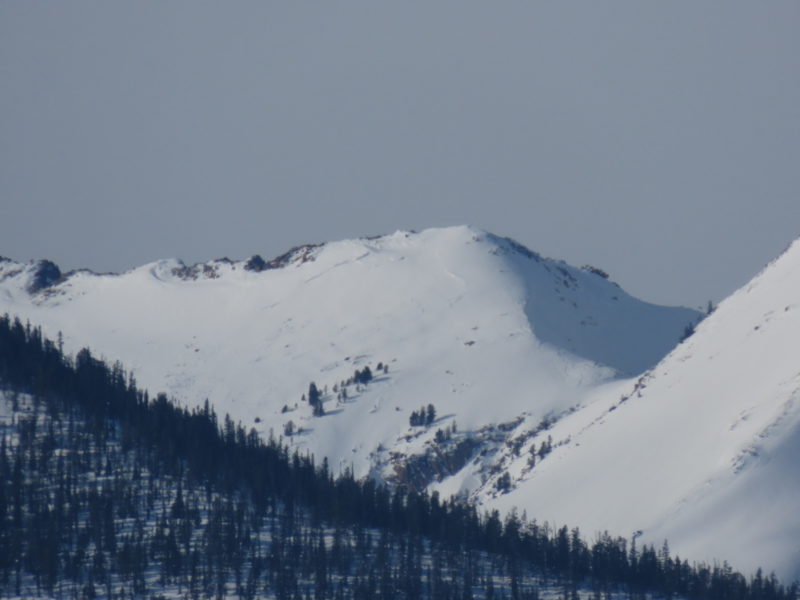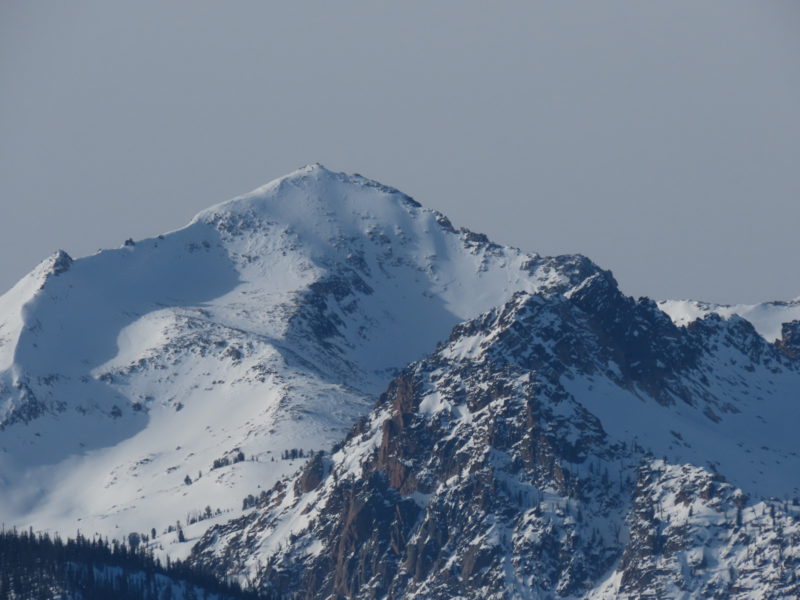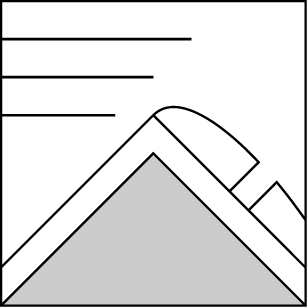Basic Information
Observation Details
Observation Date:
December 22, 2022Submitted:
December 23, 2022Observer:
SAC - VandenBosZone or Region:
Galena Summit and Eastern MtnsLocation:
Fourth of July Drainage (6,800-10,300')Signs of Unstable Snow
Recent Avalanches?
YesCracking?
WidespreadCollapsing?
IsolatedSnow Stability
Stability Rating:
FairConfidence in Rating:
ModerateStability Trend:
SteadyBottom Line
The solstice wind event produced numerous small to large avalanches and resculpted the snowpack, particularly at middle and upper elevations.
Advanced Information
Weather Summary
Cloud Cover:
Mostly CloudyWind:
Moderate , WNew/Recent Snowfall:
Difficult to determine HN with certainty due to the strength of the wind, but seemed like15-20cm HN since 12/19 snowfall beganClear skies in the morning became broken to overcast by afternoon. It was cold. Winds were transporting snow in the Boulders on my drive north. In Fourth of July, winds were calm in low and middle elevation terrain, blowing light to moderate from the W at upper elevation.
Avalanche Observations
| # | Date | Location | Size | Type | Bed Sfc | Depth | Trigger | Photos | Details |
|---|---|---|---|---|---|---|---|---|---|
| 1 |
Dec 21, 2022 (+/- 1 day) |
Blackman Peak S 10000ft |
D2 | N-Natural | Report | ||||
| 1 |
Dec 21, 2022 (+/- 3 days) |
Blackman Peak S 10100ft |
D2 | N-Natural | Report | ||||
| 1 |
Dec 21, 2022 (Exact) |
Payette Peak E 10000ft |
D2 | N-Natural |

|
Report | |||
| 1 |
Dec 21, 2022 (Exact) |
Hell Roaring Ck - Dave's Peak (NE of Mount Cramer) NE 10200ft |
D2 | N-Natural | Report | ||||
| 1 |
Dec 21, 2022 (Exact) |
Mt Cramer (Hell Roaring Ck drainage) SE 10300ft |
D2.5 | N-Natural |

|
Report | |||
| 1 |
Dec 21, 2022 (+/- 1 day) |
north of Horton Peak W 9400ft |
D2 | HS-Hard Slab | N-Natural | Report | |||
| 1 |
Dec 21, 2022 (Exact) |
Parks Peak SE 10100ft |
D2 | N-Natural | Report | ||||
| 1 |
Dec 21, 2022 (+/- 1 day) |
Owl Ck - south of Bromaghin Peak NE 10000ft |
D2.5 | N-Natural | Report |
I observed numerous D1-2 avalanches that occurred during the wind event in the Sawtooths and Smokys. I also observed several D2.5-D3 persistent slab avalanches that failed in heavily wind loaded terrain in the Sawtooths and Smokys. Visibility was poor in the White Clouds, thanks to milky, overcast skies, but I observed a handful of D2s and numerous D1-1.5s in the terrain I moved through.
Snowpack Observations
My primary goals were to check in on the snowpack here, try to get a handle on how much snow had fallen recently, see what the wind had done, and to look at persistent slab problems in this area.
Snow: Since my last trip here, prior to the big storm from 12/9-12/12 roughly 30-35cm of snow had accumulated in sheltered terrain. There isn't a ton of sheltered terrain after a wind event like that so it was a bit hard to put my finger on this number. 15-20cm of this snow fell from 12/19-12/21 and a now-settled 10cm fell during the big storm! Impressively underwhelming, but this matches what model forecasts called for.
Wind: widespread wind-effect from top to bottom. The White Clouds are back to looking how they normally look. So are the Boulders
Persistent slab problems:
12/19 (new old): Watching this layer develop, I was fairly concerned about it, from Banner down to the WRV. I think the solstice wind may have done us a favor in beating this up and I suspect it will be much less problematic thanks to that. Its distribution went from widespread to difficult-to-predict-isolated. However, this layer did develop over a relatively long time period and included widespread SH in addition ton FCsf. Where it is well preserved I do not trust it.
12/8: I've been wondering about 12/8 interface on solar margins and dug two pits looking at this interface in middle-elevation terrain (8800-9200). The slab overlying this is 30-35cm thick, and grades from F- to F in sheltered terrain. I was looking on SE-facing slopes but I suspect you could find a similar combination on S and SW as well, with some variation due to aspect and slope angle. In my pits I found a 2-5mm thick layer of well-developed 1-2mm facets sitting on top of a 8-12mm thick, 1F hard MFcr. I suspect this was a RadRx crust originally. This combination produced ECTPV x2, ECTP4 x2, ECTP5, ECTP6, and ECTN5. Impressive with such a thin, soft slab! I'd imagine this will continue to be a player going forward. I also experienced common collapsing on this interface where stiffer wind slabs rested on top of it. I also dug on a sheltered, shaded slope at 9100' and found a bit of laid over SH at this interface and a thin layer of FC that did not look particularly concerning. In general, I think the 12/8 layer is a specific problem that requires a MFcr+FC or well-developed SH to really be problematic, but my confidence on this is not high.
11/27: On solar slopes, I did not get unstable snowpack test scores on 11/27, though the snowpack was somewhat irregular where I was looking. Snowpack was partially welded to the ground, but it wasn't particularly moist, more icy. There are ugly MFcr+FC matrices down at 11/27 on solars, and I'm not ready to write it off. I could see this being a "strong weak layer", the type that can withstand the load from thicker, denser slabs before failing (read: big avalanches). I also dug on a sheltered, shaded slope at 9100' and found 11/27 down 70cm in a 115cm snowpack. Slab overlying this grades from F to 1F+, the upper portion of this slab (below the new snow) is undergoing a good amount of faceting and is loosing strength/internal cohesion. I received ECTP24, ECTN25 (with a vertical slab fracture under the shovel), and ECTP25 , and CPST 26/100 and 23/100 both to END. This layer will produce more avalanche activity with additional loading, but likelihood of human-triggered avalanches are gradually decreasing, for the time being...
Avalanche Problems
| Problem | Location | Distribution | Sensitivity | Size | Comments |
|---|---|---|---|---|---|
 Persistent Slab
Persistent Slab
|
|
Weak Layer(s):
Nov 27, 2022 (FC)
Comments: Rose shaded based on where this snow exists, its character and sensitivity varies by aspect and elevation |
|||
 Wind Slab
Wind Slab
|
|
Layer Depth/Date: from solstice wind event Comments: Slabs existed at all elevations, though character and distribution varies dramatically. Slabs varied from stubborn to reactive, depending on slab characteristics and surfaces they sat on. |
|||
 Persistent Slab
Persistent Slab
|
|
Weak Layer(s):
Dec 8, 2022 (FCsf)
Comments: Rose shaded based on where I looked at this layer today . More info above in snowpack observation section. |
Terrain Use
Avoiding exposure to overhead hazard and avoiding large, consequential terrain with persistent weak layers.
